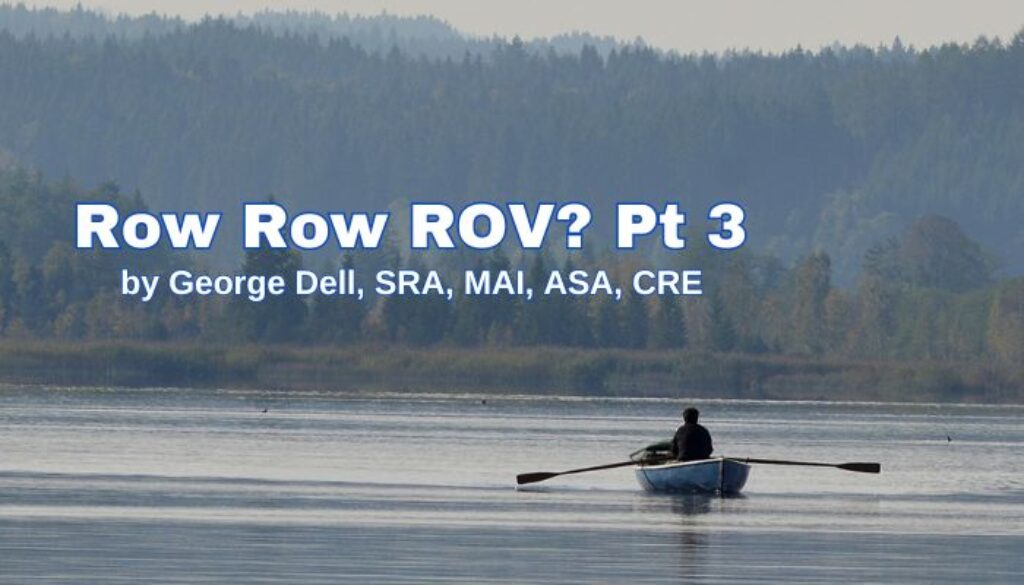How did this “official” ROV process happen? We used to just swim, now we have a rowboat and an oar!
Editor’s Note: To read the entire Row, Row, ROV series, and a few more posts on Reconsideration of Value, click here.
ROV (Reconsideration of Value) is ostensibly motivated by bias issues, as well as other possible problems. The idea is that there is now an official, organized way for borrowers who feel they have been discriminated against — to proceed. It also places some burden on lenders as the intermediary of the process, with obligations to both the potential borrower and to the appraiser.
What used to be “you are messing up my deal” is now yet another set of rules. Why more rules and things to do? There may be two causes.
How did we get here? An ROV is an official process when there is a claim that the number is not high enough. (I suspect we will never get ROVs because the borrower thinks we came in too high.) (Hmmm, or maybe some buyers may eventually find an ROV is a good negotiating tool … ) (Ah, unintended consequences – a future topic of this series.)
Well, players in the loan game want to make the loan, including the consumer-borrower. Appraisers provide an “opinion” of value. A point value. No wiggle room. Enough, not enough. Yes/no. It is the single thing in the entire process which is yes/no. Deal/no deal. The opinion of value.
Everything else for the appraiser is around the USPAP word: be credible. Credible is “worthy of belief.” It turns out we are often found “not worthy” and even biased … How unworthy.
Therein is the problem. The appraisal process starts with “pick some comps” and ends with “an opinion.” These two concepts ensure and enable subjectivity. (Even as USPAP requires objectivity.) The process itself is thus vulnerable to accusations of bias (whether true or not).
Appraisals and appraisers have always experienced challenges and pressure to arrive at a good value, meeting the user’s expectation (as USPAP requires).
So how did we end up so vulnerable? Mostly history of data. (Cause #1).
The appraisal “process” was developed early in the last century. Appraisers had to “collect” comparable sales. Common sources comprised: 1) prior appraisals; 2) public records, confirmed verbally with a participant to the transaction; 3) other appraisers; 4) friendly agents. Data convenience and personal confirmation were paramount.
Who you knew was as important as what you knew! Subjectivity was accepted for the reality of the day. The goal was objective humans, not objective data. Standards reflected that and still do to this day.
Challenges to comps and opinion were subject to another’s opinion. Believable – or unbelievable!
That has changed. Data has changed. We are in a numbers world now. Objective data selection should take precedence over convenience and cherry picking of comps.
The bias issue (Cause #2) arose from complaints and research positions demonstrating a correlation of low appraiser opinions, with the racial structure in given neighborhoods. The complaints (valid or not) created a great deal of attention. That attention created new rules, policies, and a need to do something. The formalized ROV process addresses this reality.
Any bias, analytic or personal, is enabled by the old “trust me” philosophy — as taught to new and retiring license-renewing appraisers. In license education, and more so in continuing “learning.”
The solution to the bias issue and ROV complexity is in adherence to data science principles. EBV© (Evidence Based Valuation) is data science applied to valuation. It provides unbiased results at optimized reliability.

June 5, 2024 @ 5:12 am
Personally, I welcome a formal procedure. Some lenders have bordered on harassment.